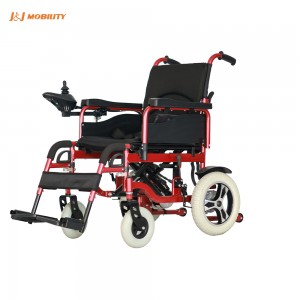Analysis of the Main Functions and Uses of Electric Wheelchairs
With the advancement of technology, electric wheelchairs have become essential assistive devices for individuals with mobility challenges. Compared to traditional manual wheelchairs, electric wheelchairs not only provide powered support but also integrate various intelligent features to meet users’ diverse needs in mobility, safety, and comfort. Below are the common functions of electric wheelchairs and their respective roles.
1. Power Drive Function
Core Features: Powered by a motor, users can easily move forward or backward without manual effort.
Speed Adjustment: Most electric wheelchairs support multiple speed settings to accommodate different scenarios.
Terrain Adaptability: Some high-end models can handle complex terrains such as slopes, grass, and sand.
Long Range: Depending on the battery configuration, a single charge can allow travel distances of 10-30 kilometers or even farther.
Uses: Suitable for users who require long-term or long-distance mobility, especially in outdoor environments.
2. Steering and Control Function
Core Features: Direction and operational functions can be controlled via a joystick, buttons, or touchscreen panel.
360° Flexible Steering: Users can easily turn in narrow spaces.
Multiple Control Modes: Some wheelchairs support voice control, smartphone apps, or remote control.
Uses: Particularly suitable for flexible use in various indoor and outdoor environments, allowing users greater autonomy in mobility.
3. Braking and Safety Features
Core Features: Multiple braking systems ensure user safety.
Electromagnetic Brake: Automatically brakes when power is lost, preventing the wheelchair from rolling.
Electronic Brake: Provides dynamic braking control for a smoother deceleration experience.
Tipping Protection: Rear anti-tip bars prevent tipping on slopes or uneven surfaces.
Uses: Ensures user safety in different environments, particularly on steep inclines or in crowded areas.
4. Comfort Features
Core Features: Provides a comfortable riding experience.
Adjustable Seating: Seat height, angle, and backrest tilt can be adjusted to meet various seating preferences.
Shock Absorption System: Equipped with springs or hydraulic dampers to adapt to bumpy surfaces, enhancing ride stability.
Breathable Materials: Seats are often made with memory foam or breathable fabrics, reducing fatigue during prolonged use.
Uses: Ideal for users who spend extended periods in their wheelchairs, enhancing comfort and reducing physical strain.
5. Folding and Portability Features
Core Features: Lightweight design for easy transport and storage.
Folding Design: Manual or one-touch folding functionality for convenient storage in car trunks or home corners.
Lightweight Materials: Constructed with aluminum alloy or carbon fiber frames to reduce overall weight.
Uses: Facilitates easy transport for users and caregivers, suitable for travel or daily outings.
6. Daily Living Assistance Features
Core Features: Provides functionalities related to daily living.
Electric Lifting Function: Assists users in reaching high or low items.
Tilt and Stand Function: Some wheelchairs allow users to adjust to a standing position for socializing or exercising.
USB Ports: Allows charging of mobile devices and other gadgets, meeting modern users’ daily needs.
Uses: Enhances convenience in daily life, expanding functional scenarios for users.
Conclusion
The diverse functionalities of electric wheelchairs significantly enhance the independence and quality of life for individuals with mobility challenges. Whether opting for a basic model or a high-end smart version, users should choose based on their specific needs, budget, and usage scenarios to ensure that the features are practical and reliable.
Post time: Nov-26-2024


